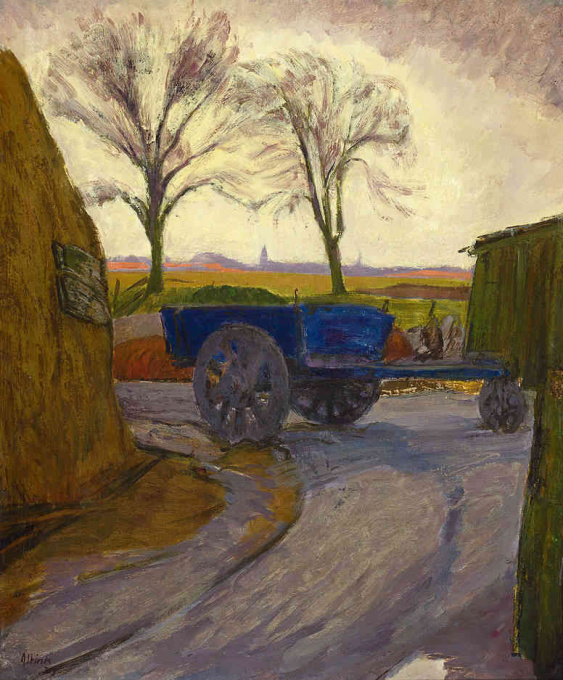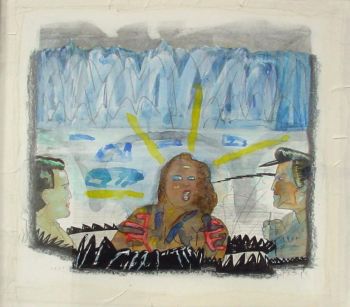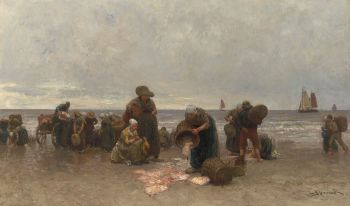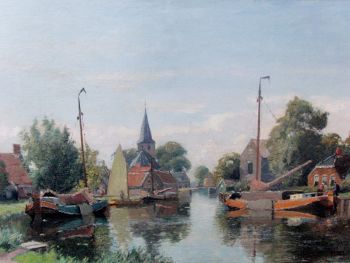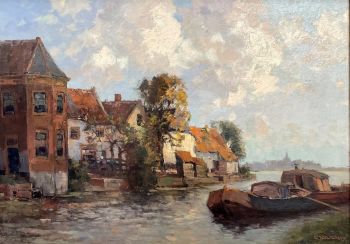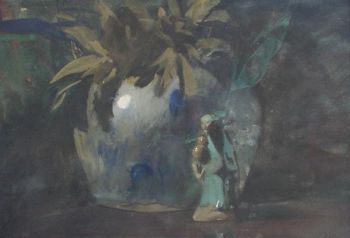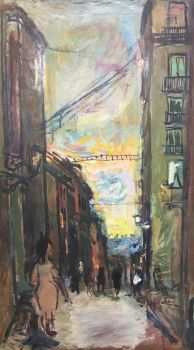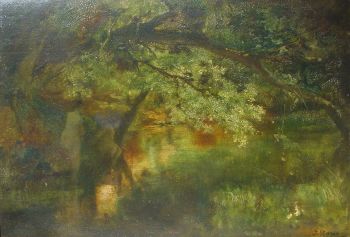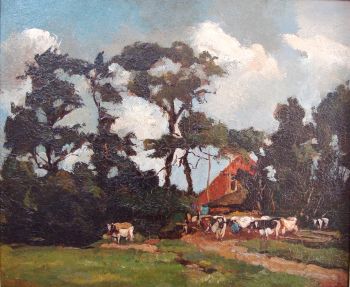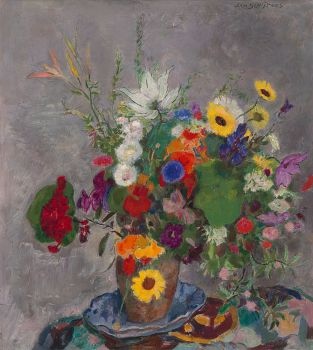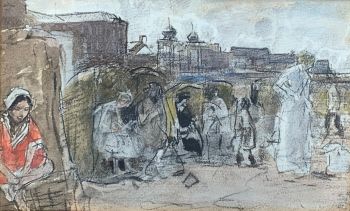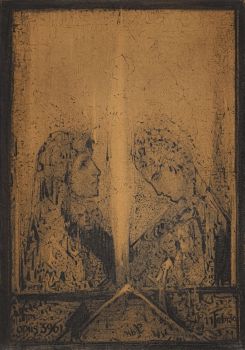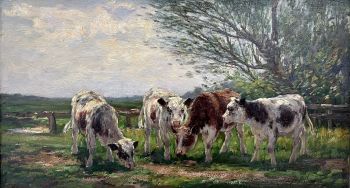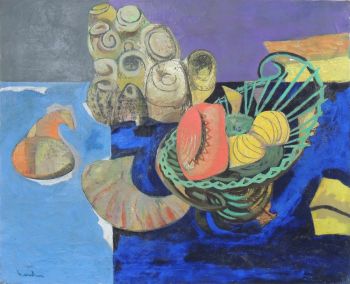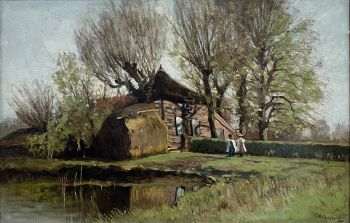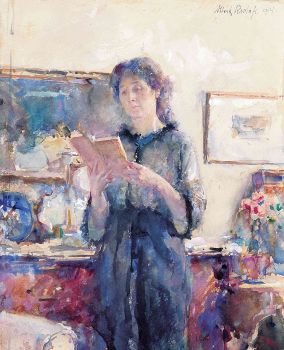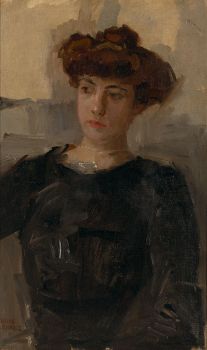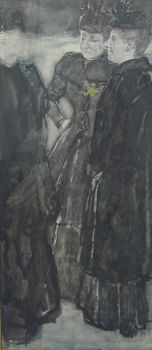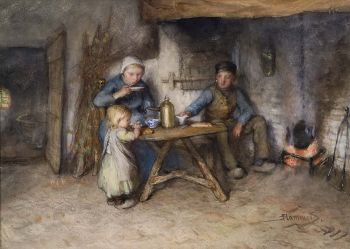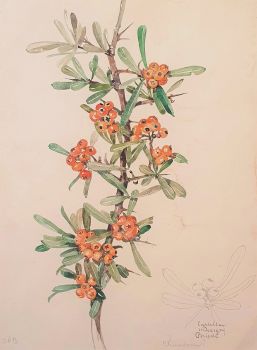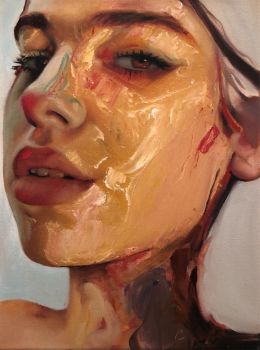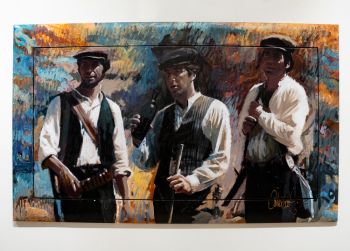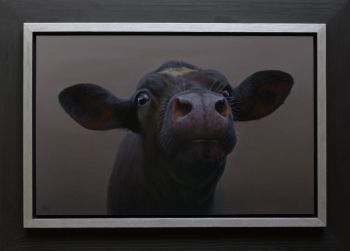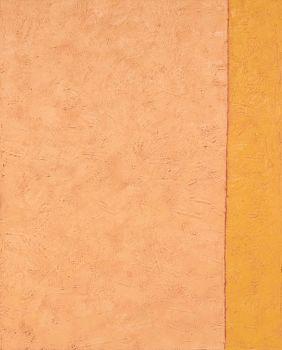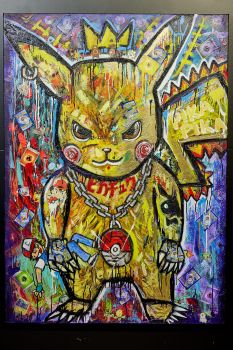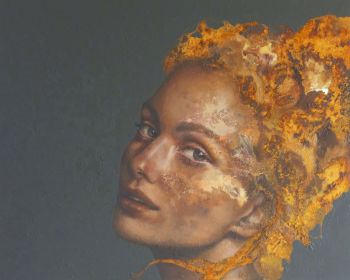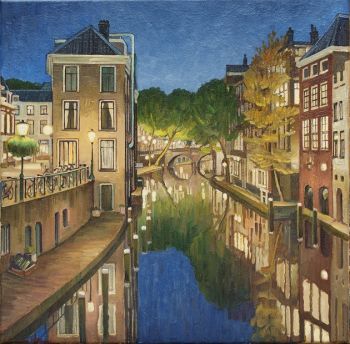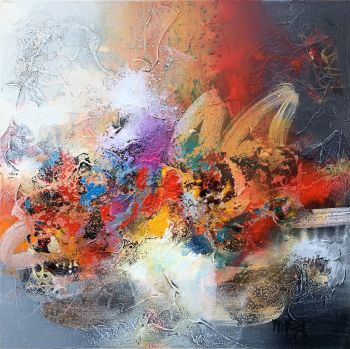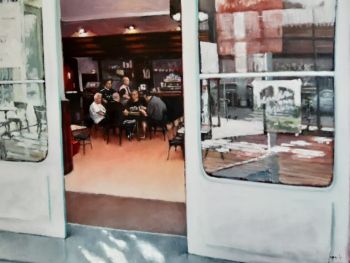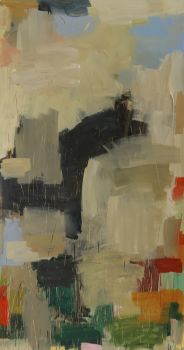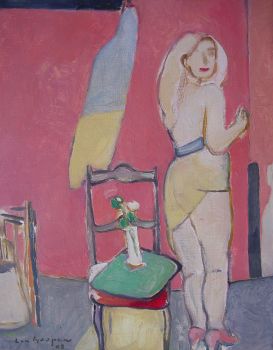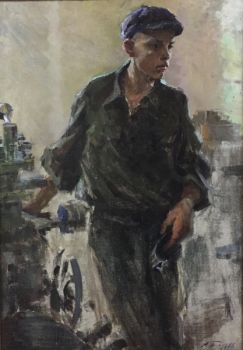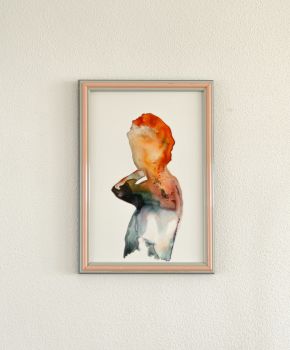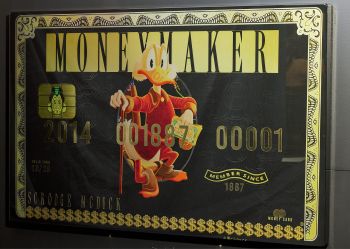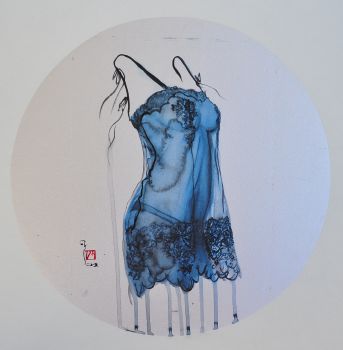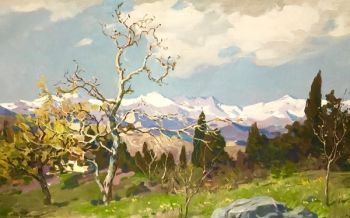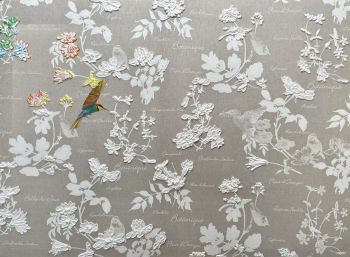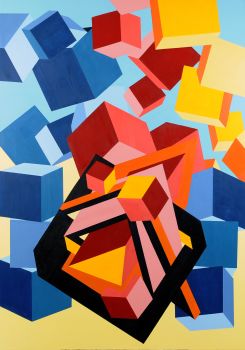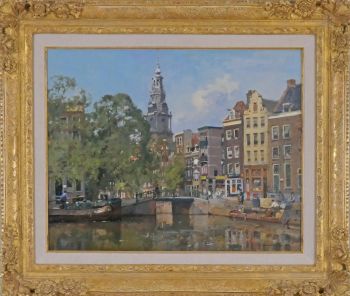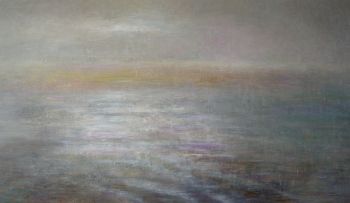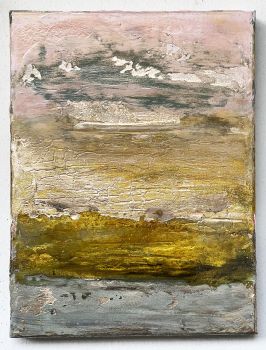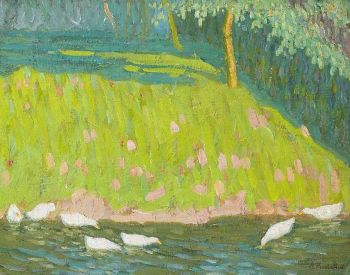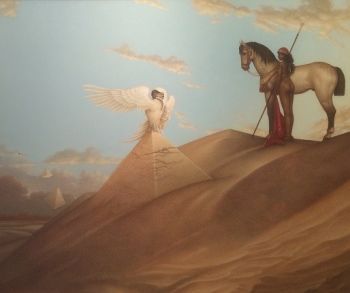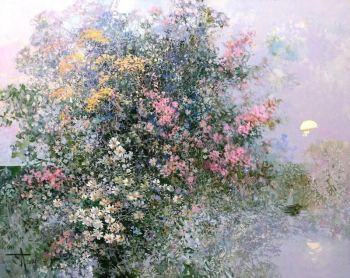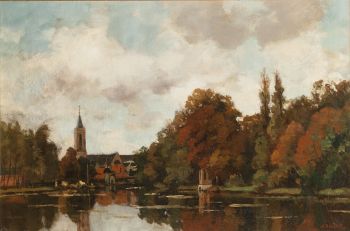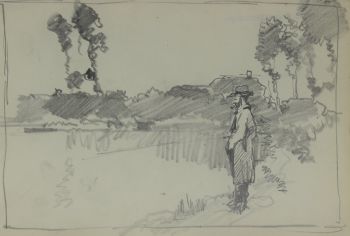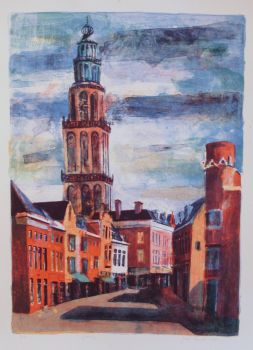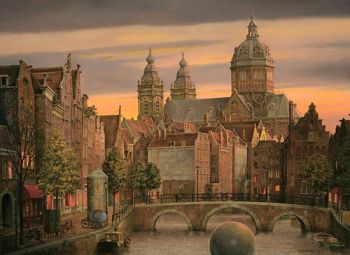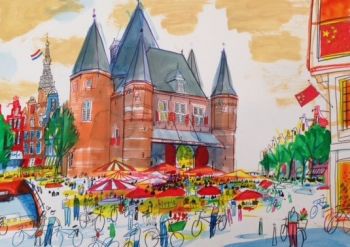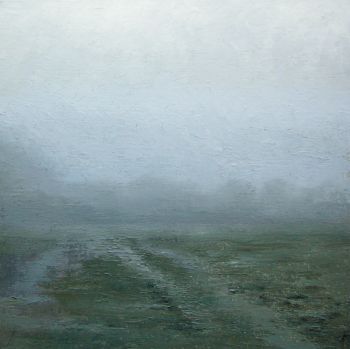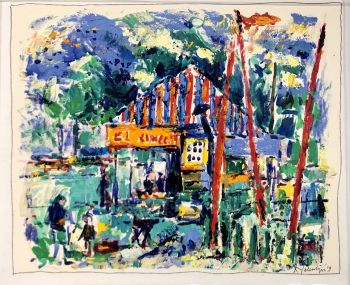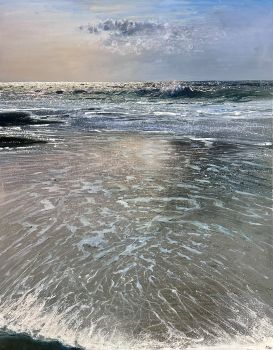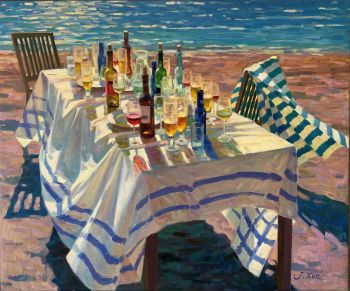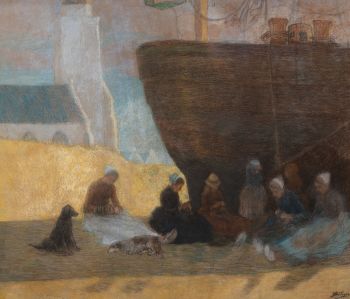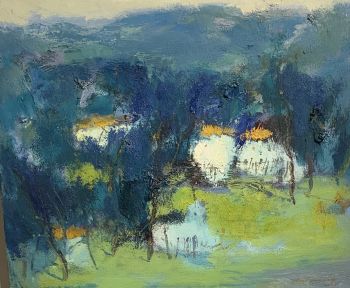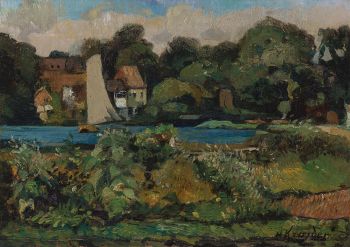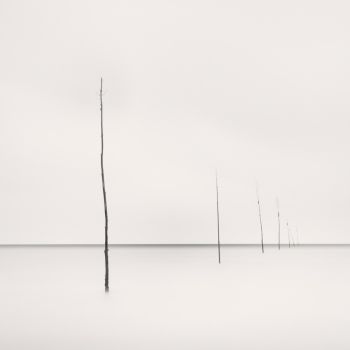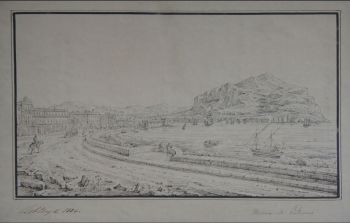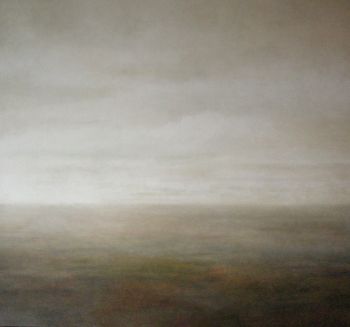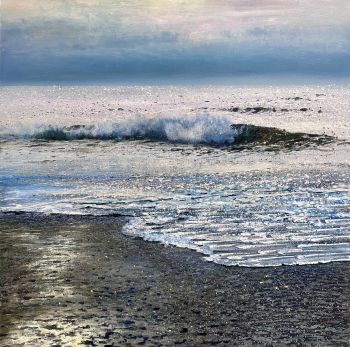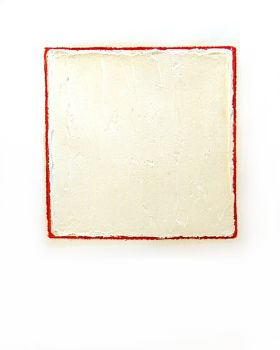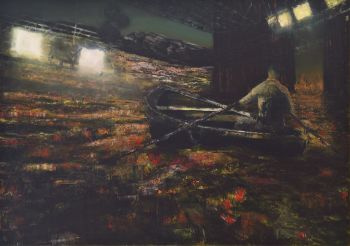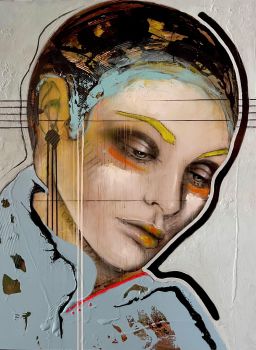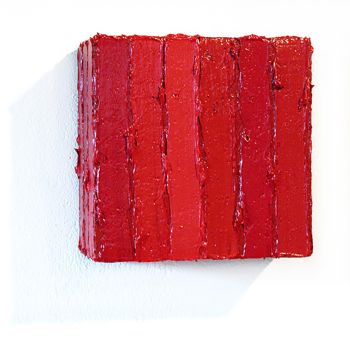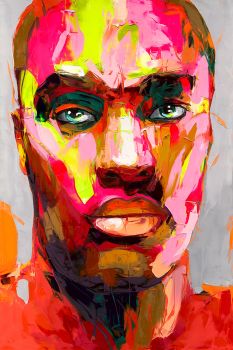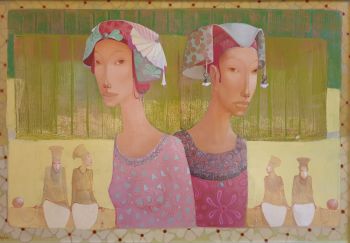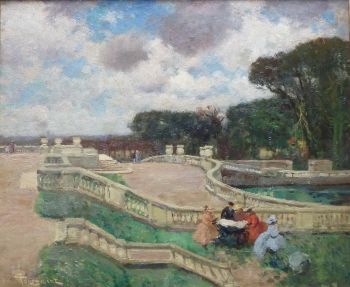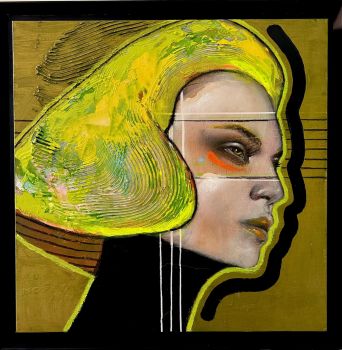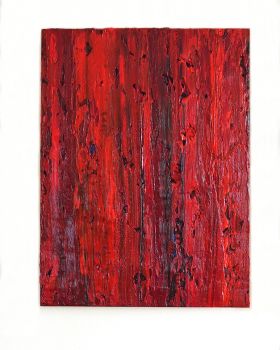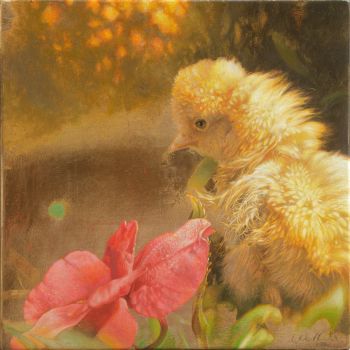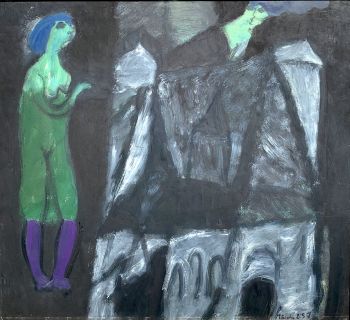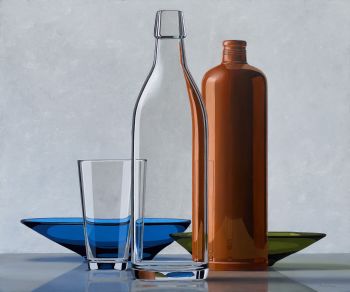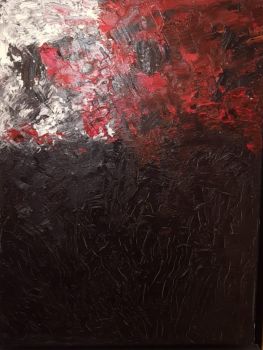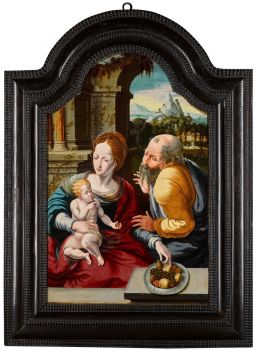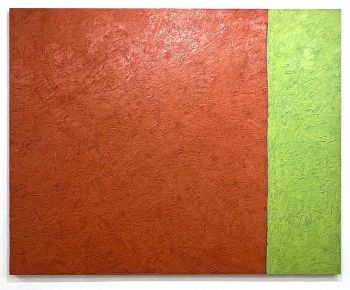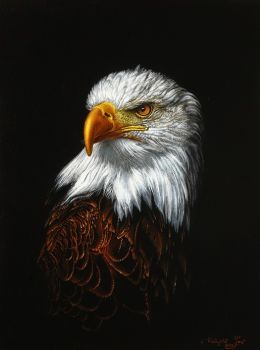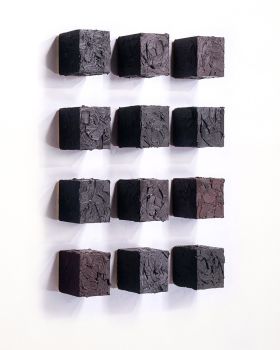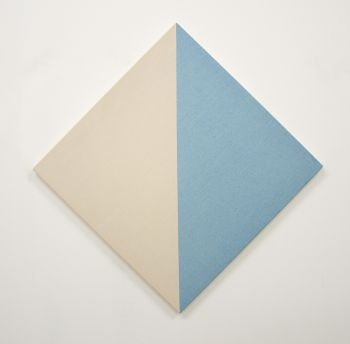Blauwe kar bij Blauwborgje, Groningen 1921
Jan Altink
SegeltuchÖlfarbeFarbe
80 ⨯ 65 cm
ConditionExcellent
Derzeit nicht über Gallerease verfügbar
- Über KunstwerkOil on canvas
80 x 65 cm.
Signed and dated: lower right ‘Altink 21’
Literature: C. Hofsteenge, De Ploeg 1918-1941 De Hoogtijdagen, Groningen 1993, p. 78 (ill.)
With Johan Dijkstra, Jan Wiegers and George Martens Jan Altink founded the Groningen artist association ‘De Ploeg’ in 1918 to organize exhibitions of modern art and show artists and public the latest developments in art, architecture and literature. Around Jan Wiegers formed a group of Ploeg-painters who found their inspiration in expressionism. Wiegers brought the modern style back to the Netherlands in 1921 after his stay in Switzerland with Ernst Ludwig Kirchner. De Ploeg artists began to experiment with colour, wax paint and expressive form. The blue cart at Blauwbörgje shows Altinks development to a new way of painting. Initially, Altink used a grey and green palette for his post-impressionist paintings. The careful application of the colour purple at the path, the pink reflected on the city at the horizon and the blue of the centrally placed cart show the new use of brighter colours in which Altink began to work in the early twenties. Blauwbörgje was a place just outside Groningen, where the artists of De Ploeg liked to paint. In 1923, the first anniversary party of De Ploeg was held here. - Über KünstlerJan Altink war Mitglied der Groninger Maler & rsquo; Kreis De Ploeg. Er unterschied sich jedoch von seinen Kollegen dadurch, dass er es vorzog, im Freien zu arbeiten. Er ist bekannt für seine Landschaften und lokalen Dorfszenen sowie für Stadtansichten und gelegentliche Porträts und Stillleben. Anfangs war seine Palette hauptsächlich auf Grau- und Grüntöne beschränkt, aber nach 1924 kam seine expressionistische Zeit, als er die Realität in kräftigen, lebendigen Farben und vereinfachten Formen in Wachsfarbe aufzeichnete.
Artwork details
Kategorie
Thema
Stil
Material & Technik
Farbe
Related artworks
Jan Voerman sr
Still Life with flowers in a Chinese figurine1850 - 1900
Preis auf AnfrageKunsthandel Pygmalion
Isaac Israels
"Een essayeuse bij het modehuis Hirsch"1865 - 1934
Preis auf AnfrageStudio 2000 Art Gallery
Aris Knikker
Riverview with a village (Kortenhoef, Netherlands)1887 - 1962
Preis auf AnfrageKunsthandel Pygmalion
Bernardus Johannes Blommers
VADER EN MOEDER MET KIND AAN TAFEL1845 - 1914
Preis auf AnfrageStudio 2000 Art Gallery
1 - 4 / 24- 1 - 4 / 24
- 1 - 4 / 24
- 1 - 4 / 24

